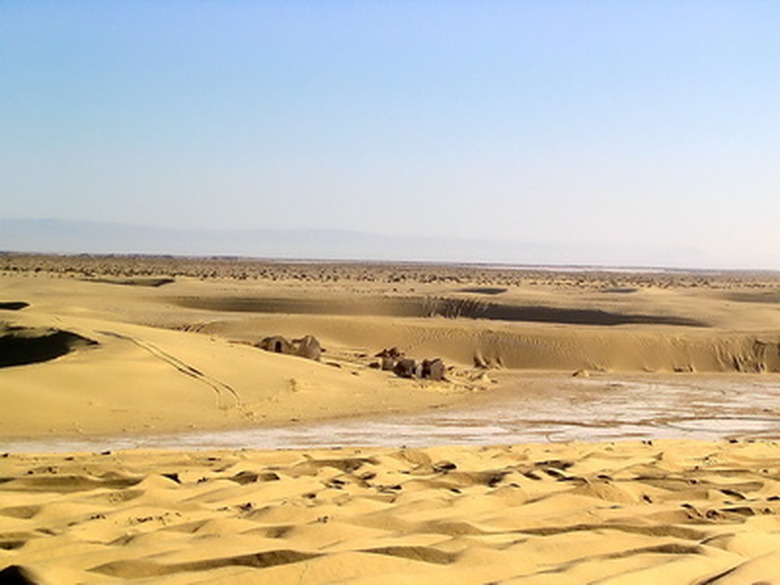Humidity In Deserts
Deserts cover 20 percent of the earth's surface yet are the driest regions in the world. Their lack of humidity is particularly striking because hot areas can hold so much moisture. Rainforests, for instance, combine warm air and high precipitation to produce some of the highest areas of humidity in the world. Deserts, on the other hand, are very dry, so they're antithetical to most life.
Humidity
Humidity
Humidity is defined as the amount of moisture content or water vapor occupying the air at any one time. High humidity occurs in areas where the high moisture content evaporates into the atmosphere. Air expands as it gets warmer, so it can hold much more humidity than cold or frigid air.
Precipitation
Precipitation
According to the University of California Museum of Paleontology, deserts receive less than 20 inches of precipitation per year. Semiarid deserts receive between 3/4 to 1 1/2 inches annually. Cold deserts fare a little better at 6 to 10 inches a year. The Atacama Desert in Chile and some parts of inland Sahara average approximately a half inch per year, and some years they even go rainless.
Evaporation
Evaporation
Deserts are prone to having long periods of little to no rain before receiving short bursts of precipitation, but the amount of humidity that does enter the air is rare. The desert air is so dry that the rate of evaporation regularly exceeds the rainfall rate, and the rainfall may even evaporate before it hits the ground.
Solar Radiation
Solar Radiation
The scant desert humidity that exists in the air is unable to block the sun's rays, so the amount of solar radiation that deserts receive can reach twice the amount of humid regions. The daily temperature swings that follow can be extreme. On one end of the spectrum temperatures can reach up to 49 degrees Celsius (120 degrees Fahrenheit), and it's not unusual that it can occasionally drop below freezing.
Adaptations
Adaptations
Desert conditions are also exacerbated by the fact that desert organisms respond to the low humidity by preserving as much water as they can without losing it to evaporation. Many desert plants have evolved a waxy structure called a cuticle that can keep water inside. Small leaves and white hairs that reflect heat may also be strategies for dealing with desert conditions.
Cite This Article
MLA
Stutsman, Jacob. "Humidity In Deserts" sciencing.com, https://www.sciencing.com/humidity-deserts-6577246/. 22 November 2019.
APA
Stutsman, Jacob. (2019, November 22). Humidity In Deserts. sciencing.com. Retrieved from https://www.sciencing.com/humidity-deserts-6577246/
Chicago
Stutsman, Jacob. Humidity In Deserts last modified March 24, 2022. https://www.sciencing.com/humidity-deserts-6577246/
